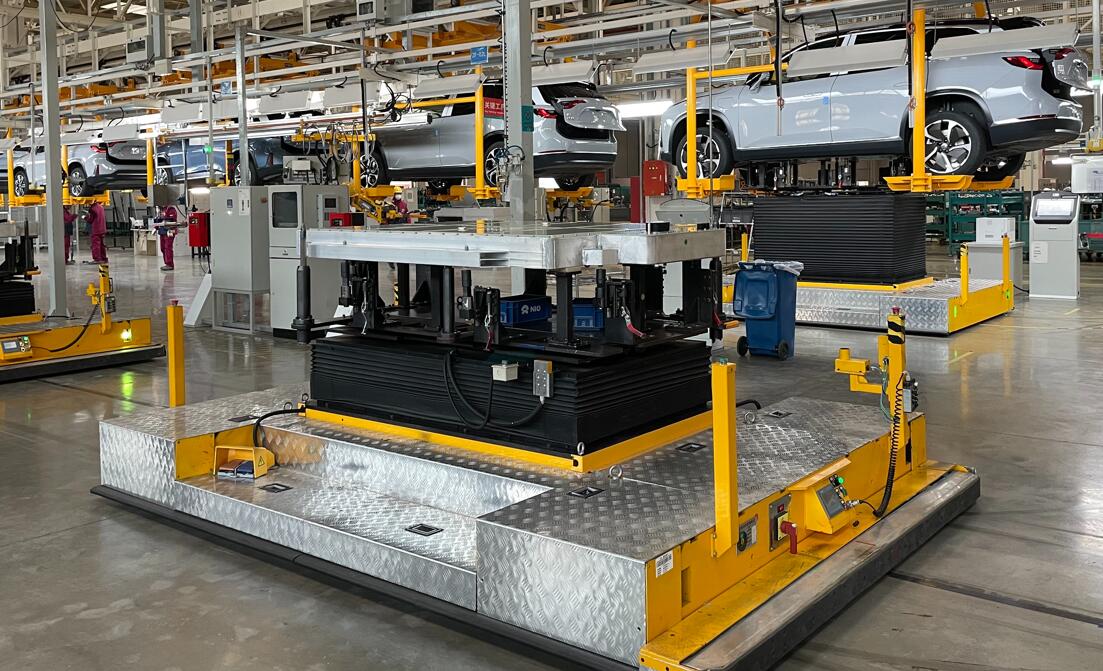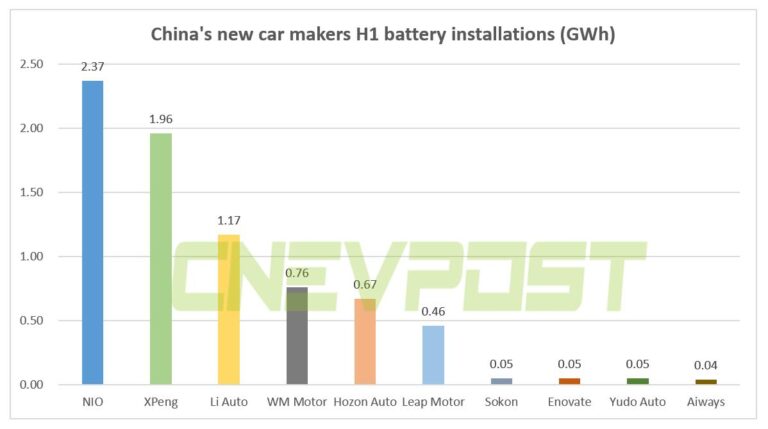(Photo source: CnEVPost)
As China's new energy vehicle industry grows rapidly, which power cell manufacturers are the biggest beneficiaries? A new study provided the answer.
The study released Thursday by QCDZSJ, a WeChat account that follows China's auto industry, said Nio's production in the first half of 2021 was estimated at 44,000 units, Xpeng Motors at 32,000 units, Li Auto at 30,500 units, Neta Automobile at 21,100 units and WM Motor at 12,900 units. The total amount of battery demands by these car companies was 9.456 GWh.
Among them, Nio ranked first with 4.433 GWh of batteries installed, Xpeng ranked second with 2.298 GWh. Li Auto had 1.177 GWh of batteries installed, Neta had 851MWh and WM Motor had 695.71MWh.
For comparison, Tesla's purchases in China were 8.572 GWh, including 2.428 GWh for exported vehicles, the largest single purchase in China.
Nio's battery supplier is CATL, and in the first half of the year, Nio's vehicle production totaled 44,000 units, with an installed battery capacity of 4.433 GWh.
Nio ranks relatively high in CATL's share and is the second-largest customer after Tesla, and the EV maker's demand may exceed 10 GWh this year.
As Nio's production increases further, the likelihood of choosing an exclusive supplier in the long term is decreasing, the study said.
In terms of low-cost lithium iron phosphate batteries, Gotion Hi-Tech is likely to be chosen by Nio, the study said. In the mid- to high-end 100kWh version, CALB is also likely to be chosen by Nio in the future, according to QCDZSJ's analysis.
Xpeng's battery suppliers are CATL and EVE Energy.
Xpeng production in the first half of the year was 32,000 units, with an installed power battery capacity of about 22.98 GWh.
Among them, CATL provided about 1.83 GWh of batteries and EVE Energy provided about 466MWh.
Xpeng has a greater demand for lithium iron phosphate version of the battery, but a large part of CATL's lithium iron production capacity is currently limited by the front-end materials, and meeting Tesla's needs comes first for CATL.
As EVE Energy's lithium iron phosphate battery capacity increases, Xpeng is expected to get more supply, the study said.
Li Auto's battery supplier is CATL.
Li Auto produced a total of 30,500 vehicles in the first half of the year, with a single vehicle having a battery capacity of 38.5 kWh, corresponding to an installed base of 1.177 GWh of batteries.
Neta's battery suppliers are CATL, JEV Energy and Huading Guolian.
Neta produced 21,100 units of new energy passenger cars in the first half of the year, corresponding to an installed battery capacity of 0.851 GWh.
WM Motor's battery suppliers are Tafel New Energy Technology, REPT Energy and CATL, of which Tafel supplied 570 MWh, accounting for about 81.9 percent.
WM Motor produced 13,000 units of new energy passenger cars in the first half of this year, corresponding to an installed capacity of about 695.7 MWh of power batteries.


